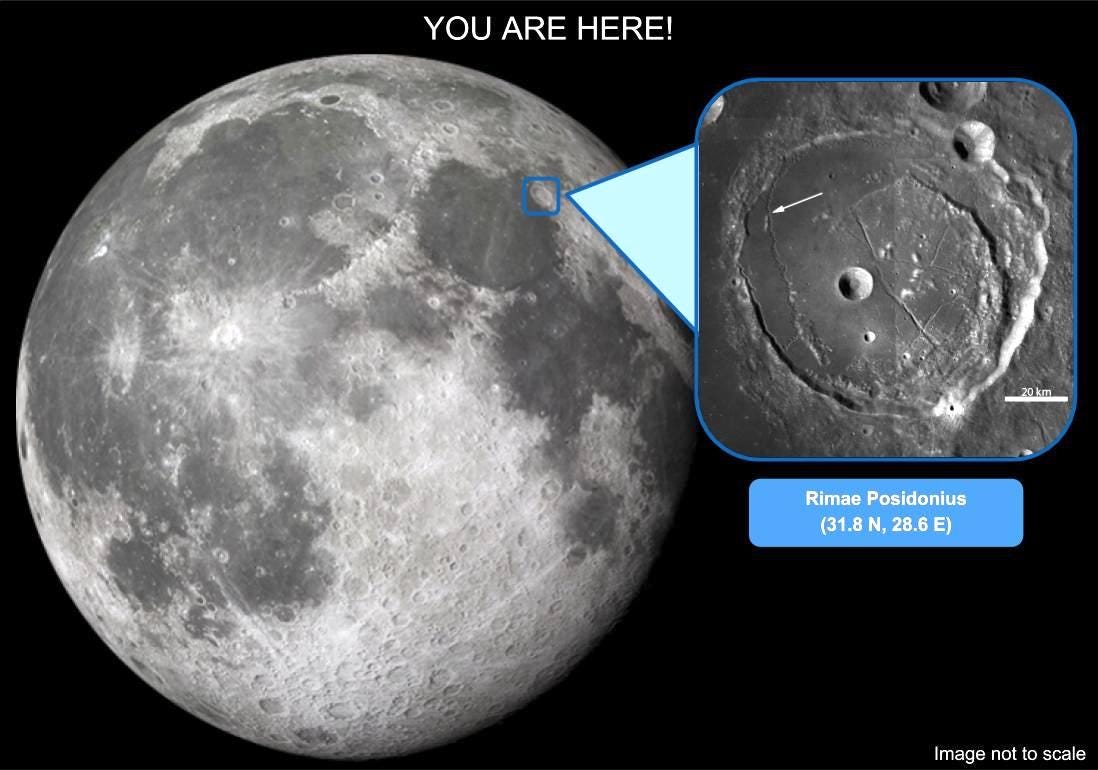A hundred kilometers long sinuous lava channel on the Moon
Twists and turns at Rimae Posidonius.
Seen here is a curvy, long lava channel—a rille—stretching along the large crater Posidonius.

The sinuous rille of Rimae Posidonius was formed during the time of active volcanism on the Moon. The hot lava melted and eroded the crater floor leading to the carved rille. The lava must be highly fluid (having low viscosity) to cause such striking twists and turns in the carved channel.

The rille runs from north of the crater and then steers away southwards and then proceeds to the crater rim in the southwest. Running across for more than a 100 km of linear distance within the large crater, the actual distance of the rille including all of the curves is much greater.
Physically examining and sampling sinuous rilles via future lunar missions is exciting because these rilles expose layers of past lava flows, giving us an entry point into the volcanic history of the Moon.

